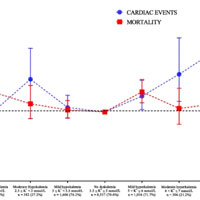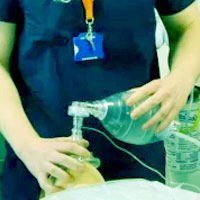Tag: study

Seizure Detection Algorithms in Critically Ill Children
Some commercially available seizure detection algorithms demonstrate performance for seizure detection that is comparable to that of electroencephalography experts using quantitative electroencephalography displays. Continuous... read more

Influence of Dyskalemia at ICU Admission and Early Dyskalemia Correction on Survival
Dyskalemia is common at ICU admission and associated with increased mortality. Occurrence of cardiac events increased with dyskalemia depth. A correction of serum potassium level by day 2 was associated with improved... read more

Machine Learning for Patient Risk Stratification for ARDS
An acute respiratory distress syndrome (ARDS) prediction model based on electronic health record (EHR) data with good discriminative performance has been developed. The results demonstrate the feasibility of a machine... read more

Video Laryngoscopy Does Not Improve Intubation Outcomes in Critical Patients
On the basis of the results of this study, we conclude that, compared with direct laryngoscopy, video laryngoscopy does not improve intubation outcomes in emergency and critical patients. Prehospital intubation is even worsened... read more

Apneic Oxygenation As a Quality Improvement Intervention in an Academic PICU
Implementation of apneic oxygenation in PICU was feasible, and was associated with significant reduction in moderate and severe oxygen desaturation. Use of apneic oxygenation should be considered when intubating critically... read more

Effects of Sepsis on Mortality in Critically Ill Patients 2 Years After ICU Discharge
Compared with patients without sepsis, those with sepsis have higher mortality in the intensive care unit and have more pain, hospital readmissions, and functional decline within 2 years after discharge. During the study,... read more

Delayed Interhospital Transfer of Critically Ill Patients with Surgical Sepsis
Patients with surgical sepsis who spent more than 24 hours at an outside facility prior to transfer had greater initial illness severity, longer intervals between admission and source control, and more nosocomial infections... read more

Association Between Hospital Staffing Models and Failure to Rescue
Low failure to rescue (FTR) hospitals had significantly more staffing resources than high FTR hospitals. Although hiring additional staff may be beneficial, there remain significant financial limitations for many hospitals... read more

Clinical Profile and Predictors of Outcome of Pediatric ARDS in a PICU
Pediatric acute respiratory distress syndrome (ARDS) contributes to a significant burden in the PICU of a developing country and is associated with significantly higher mortality. Infection remains the most common etiology.... read more

The Fragility and Reliability of Conclusions of Anesthesia and Critical Care Randomized Trials With Statistically Significant Findings
Statistically significant results in anesthesia and critical care randomized controlled trials are often fragile, and study conclusions are frequently affected by spin. Routine calculation of the Fragility Index in medical... read more

A 10-Year Longitudinal Analysis of Protocol-Based Sepsis Management
This 10-year single-center retrospective cohort showed that the use of PB management of severe sepsis and septic shock was associated with a decreased hospital mortality for patients. This mortality benefit was preserved... read more

Epidemiology of Pediatric Severe Sepsis in Main PICU Centers in Southwest China
This multicenter study demonstrates that pediatric severe sepsis is common and is a factor in the high mortality rate that is observed in PICUs in Southwest China. The mortality rate remains high; therefore, improved... read more

Thyroid Storm in the ICU
Thyroid storm requiring ICU admission causes high in-ICU mortality. Multiple organ failure and early cardiogenic shock seem to markedly impact the prognosis, suggesting a prompt identification and an aggressive management. 92... read more

1-Year Outcomes in Patients with Infection-related Atrial Fibrillation
During the first year after discharge, 36% of patients with infection-related atrial fibrillation (AF) had a new hospital contact with AF. Infection-related AF was associated with increased risk of thromboembolic events... read more








